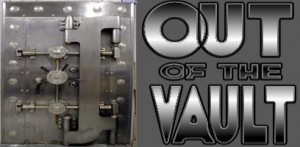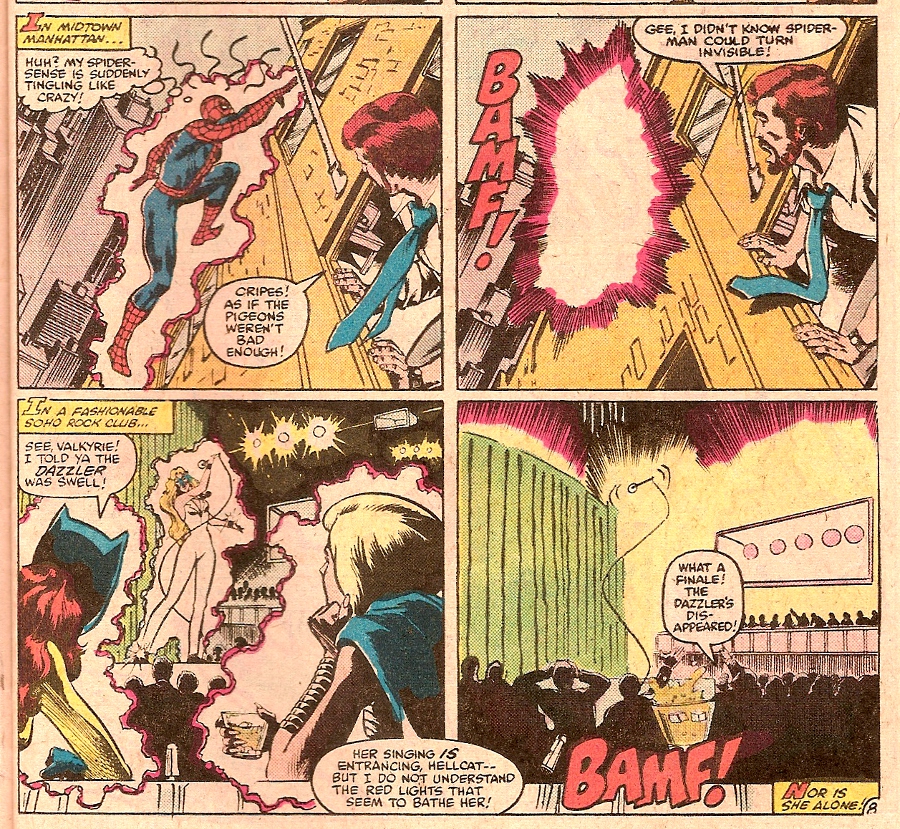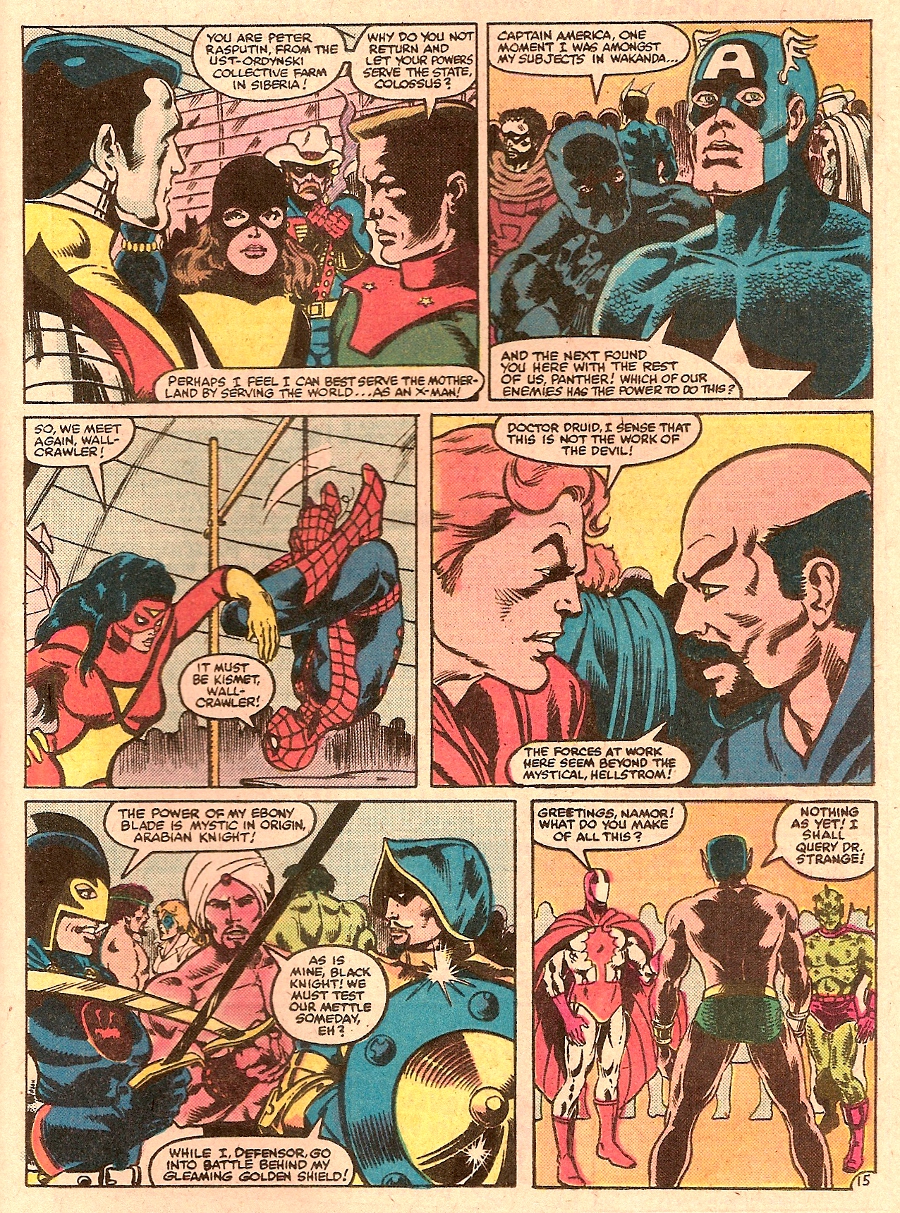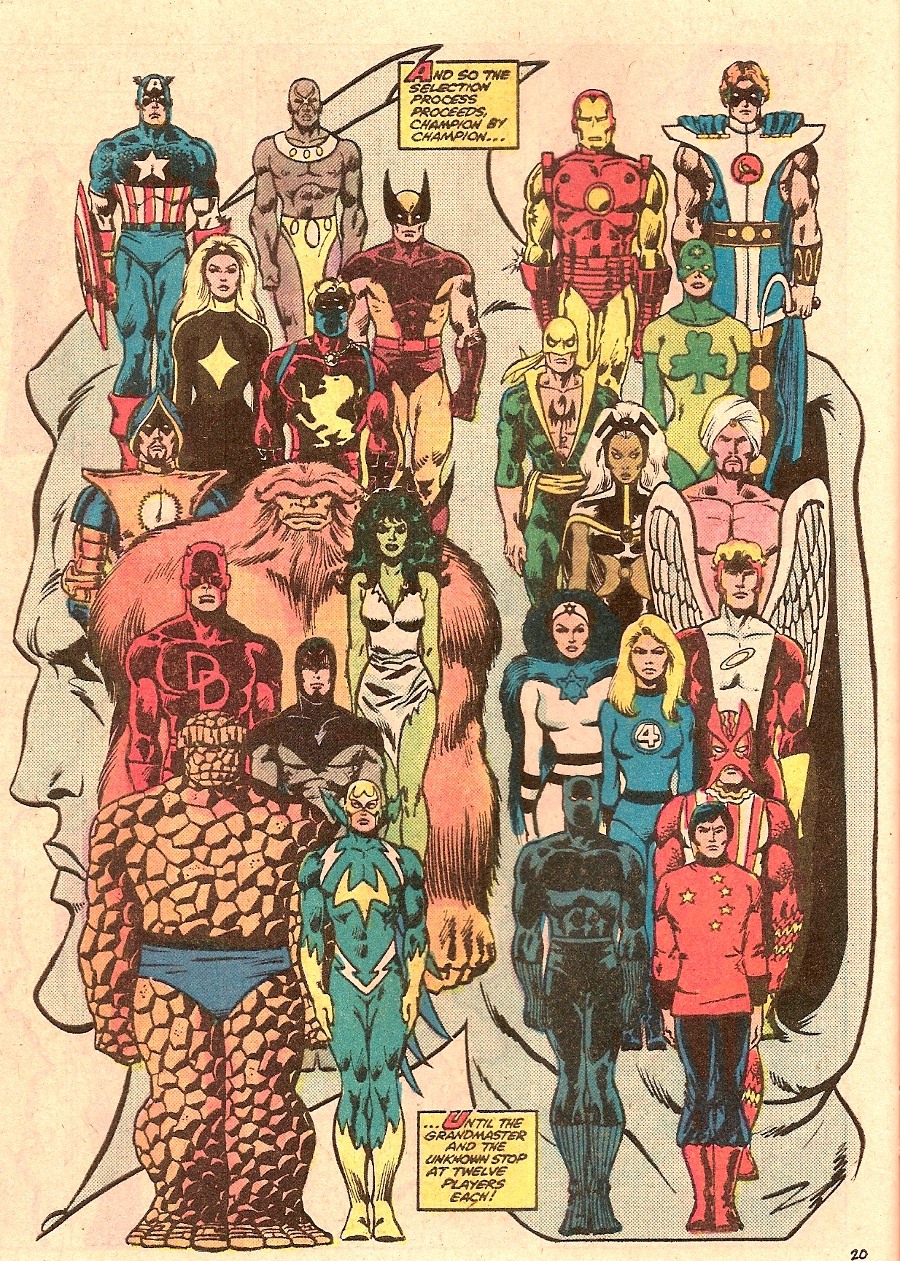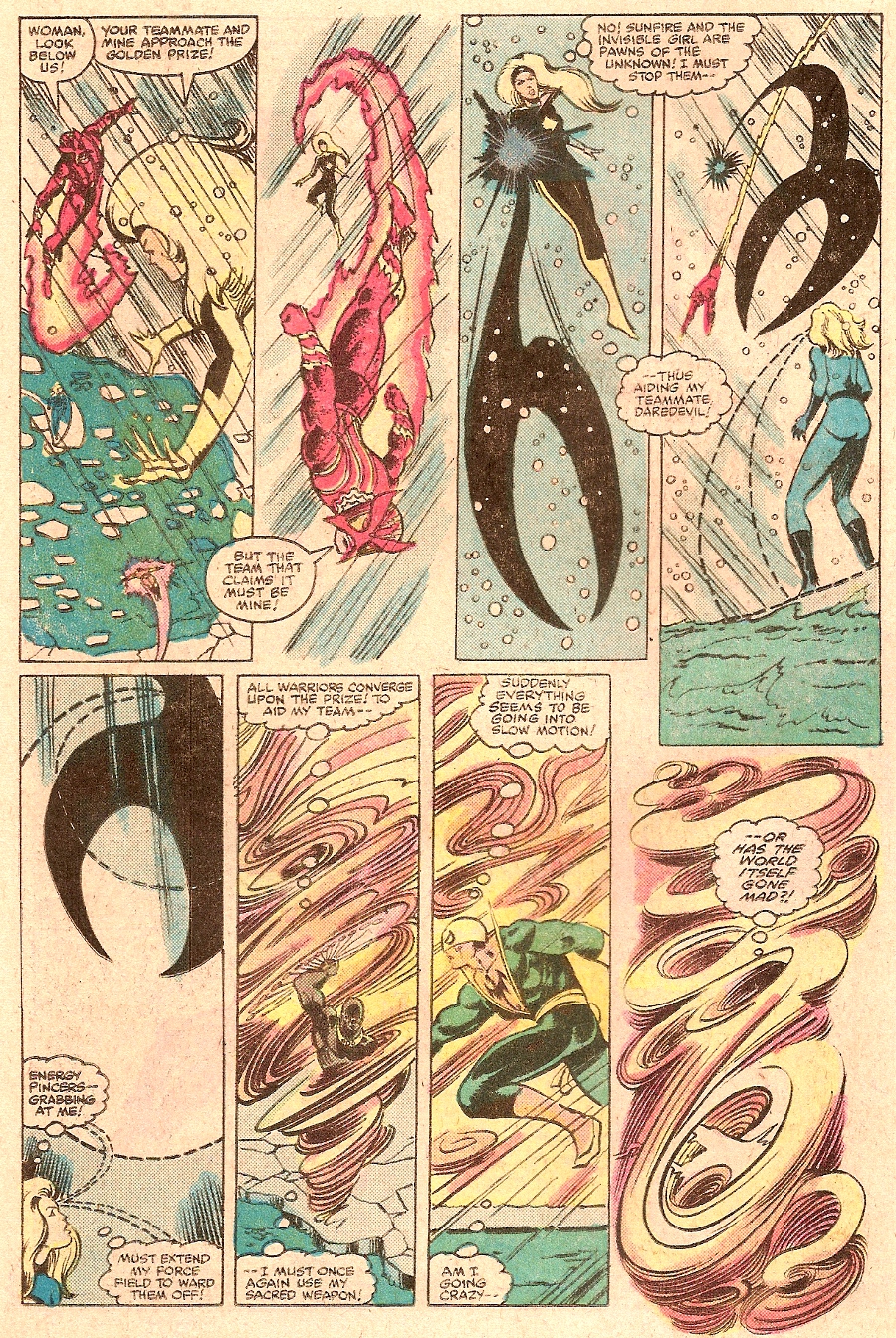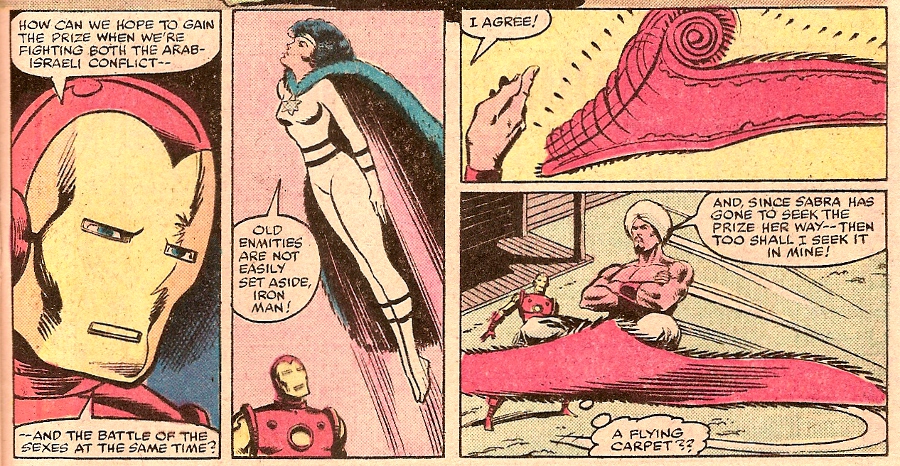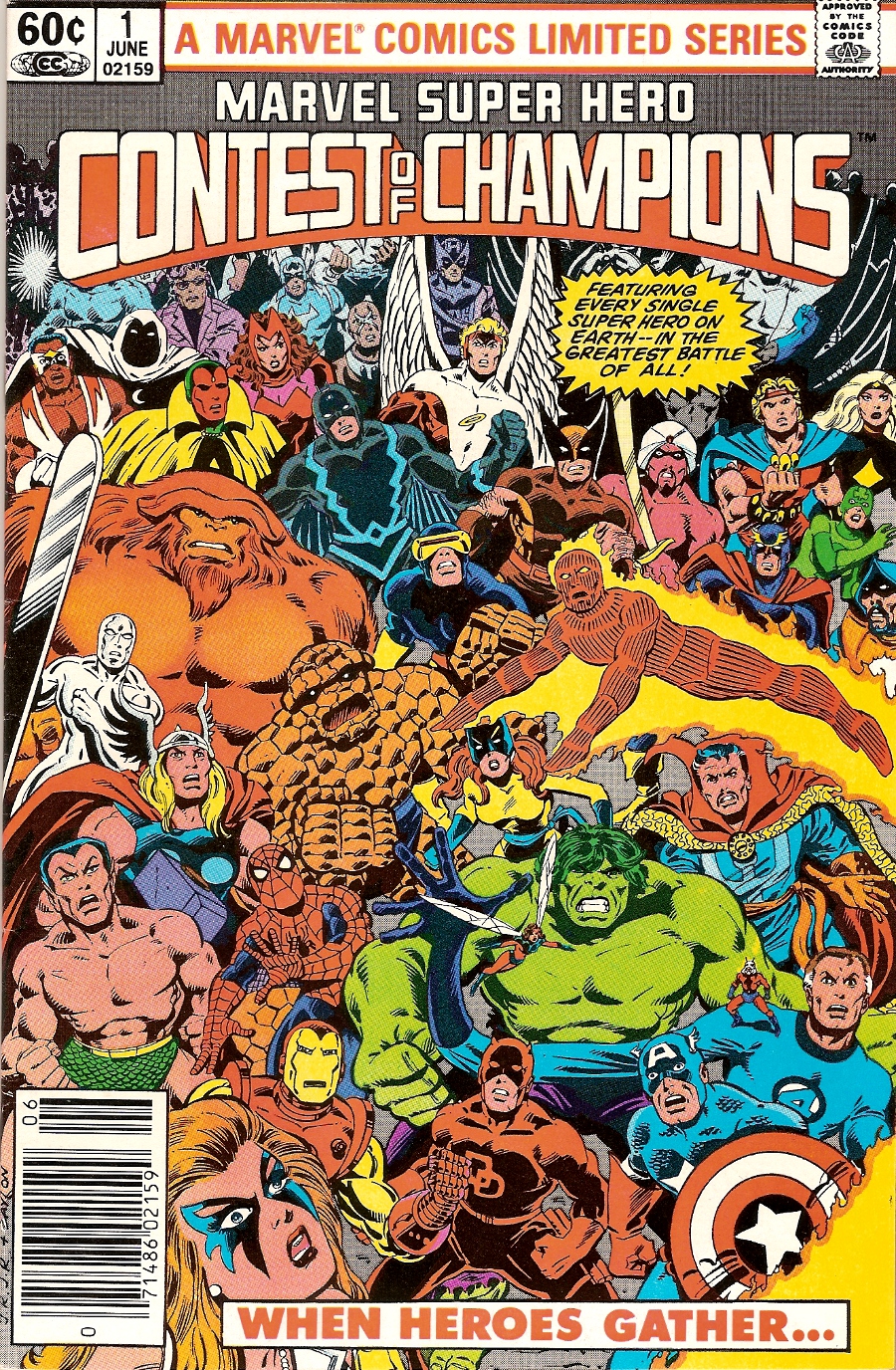 Last time, we discussed Defenders #62 and #63, in which an open casting call was given out for membership, which was answered by a lot of heroes. And although it was played for laughs, it seemed to have sparked an idea, which was the mega-team-up.
Last time, we discussed Defenders #62 and #63, in which an open casting call was given out for membership, which was answered by a lot of heroes. And although it was played for laughs, it seemed to have sparked an idea, which was the mega-team-up.
See, the cool thing about the major comics universes was that they were populated by dozens of heroes, any two or three of which could meet at any time (or as many as, say, fifteen if it was team meeting team). But you’d never (AFAIK) had a story which brought all of them together. It was hard enough juggling characters in those JLA-JSA crossovers, let alone bringing in 30-40 heroes or more. And company-wide crossovers were not yet a thing.
So it was pretty unprecedented when in early 1982, a special mini-series titled Marvel Super Hero Contest of Champions debuted, promising “every single super hero on Earth… in the greatest battle of all!”
Putting together a story of this magnitude required some heavy mental firepower, apparently, because the plotting is credited to three men–Mark Gruenwald, Bill Mantlo, and Steven Grant–with the scripting handled by Mantlo. The penciling was not by Sal Buscema, who seemed to be Marvel’s go-to guy when you needed somebody who could draw everybody, or George Perez, who later specialized in exactly this type of story, but a very young John Romita, Jr. with inks by Pablo Marcos. Jim Shooter is credited as editor-in-chief, which will be significant later.
And though the cover might have made an awesome promise, right from the start, you get a sense of how tiresome this story might end up. It opens with the Avengers having a workout in their super-gym when they are suddenly enveloped in a strange red glow and disappear. The same happens to the Soviet Super-Soldiers in a battle with the Red Ghost. And Alpha Flight. And the X-Men. And…
Ten full pages this goes on, with the tenth an extra unwelcome surprise, as it introduces eight new international heroes that we’ve never heard of before. Nine pages of random heroes disappearing mysteriously wasn’t enough? They had to make up new heroes so they could have that magical tenth?
Finally, we’re done with the disappearances and find out where the heroes have been going. And it’s a huge satellite orbiting the Earth, containing literally every super-hero in the world. Which means we have to spend several more pages on introductions.
Holy God, you have no idea how tiresome this gets. Well, if you’ve read the page above, you have some idea. After three pages of this, the folks behind the whole thing finally appear.
The heroes have been chosen to participate in a contest between the Grandmaster and a mysterious Unknown. They will be separated into teams, and each team will attempt to gather the four pieces of the Golden Globe of Life, which will be scattered around the world.
But not all the heroes. The Grandmaster and Unknown spend a couple of pages picking teams of twelve (which scripter Mantlo then refers to as “two-score,” because math is hard), with the racist proviso that they will only choose homo sapiens–no aliens, Atlanteans, Asgardians, Olympians, Eternals, or other immortals allowed. Although mutants are, apparently, from looking at the final teams.
Two things about this list, Number one, that entire page of ringers that we didn’t recognize before? All eight of them are here. And second, Angel? Seriously? Spider-Man doesn’t make the cut, but we get eight lame cultural caricatures and Angel?
So the contest is now ready to begin. And that’s the end of the first issue. Heroes disappear, heroes get picked into teams, and that’s it.
The second issue begins the actual contest. The globe has been split into four pieces, so each team sends three members to each location. The first bout features Talisman (one of the ringers), Daredevil and Darkstar against Sunfire, Invisible Girl and Iron Fist.
And while I’m all for secondary characters getting some love, there’s just no one to get excited about here. A complete unknown, two minor guest stars from team books, a minor-league martial artist, the lamest member of the Marvel Universe’s founding team (before John Byrne made her kick ass), and Daredevil, who was only interesting when Frank Miller was writing him.
The fight actually gets a little interesting, building to a frantic conclusion, but without any characters to root for, it’s a little like watching those guys who stack cups really fast.
The second bout tries to be more interesting, character-wise, but not by using established popular characters as you might suppose, or even by exploring intriguing opportunities from minor characters. Instead, among the three newbies, it includes the Arabian Knight and the Israeli heroine Sabra, which leads Iron Man to opine…
Yes, that’s right, it’s a Very Special Episode. Aside from Iron Man, the established characters are She-Hulk and Captain Britain, so once more, not a tremendous amount of fan appeal in the mix.
Which leads us to the third and final issue, in which nobody cares, because I didn’t buy it. I mean, seriously, what was there to bring me back? The antagonists were boring, and instead of the “all of  Earth’s heroes” action I was promised on the cover of issue #1, what I had to look forward to was twelve mostly minor-league heroes, including four newbies and Angel. Why waste sixty cents?
But here’s the thing:Â doesn’t this all look really familiar? No? Maybe you should refresh your memory.
Yes, less than two years later, Marvel did essentially the same thing in Secret Wars, having their most popular heroes mysteriously disappear, only to reappear in a huge space station orbiting an alien sun where they were informed that they would be participating in a contest for the amusement of a cosmic being known as the Beyonder.
Only writer Jim Shooter (remember when I said above that his name would be significant later?) apparently learned from this travesty and made a few big changes: he included the most popular heroes and kept the newbie padding to a minimum, he put villains on the opposing team, so we would have one team to root for, and he made the contest a fight rather than a jumped-up version of Capture the Flag. The resulting series wasn’t very good, but it was better than this.
And yet, as bad as this series was, it not only inspired Secret Wars, but also another really major miniseries that I’ll talk about next time.

